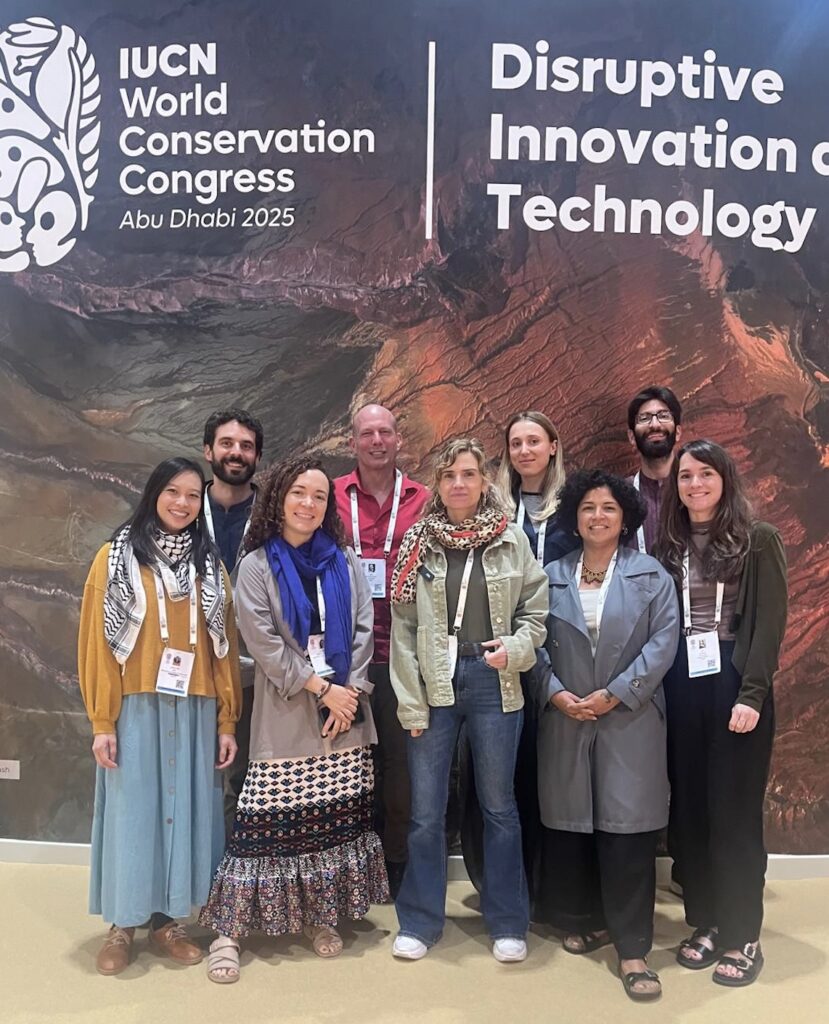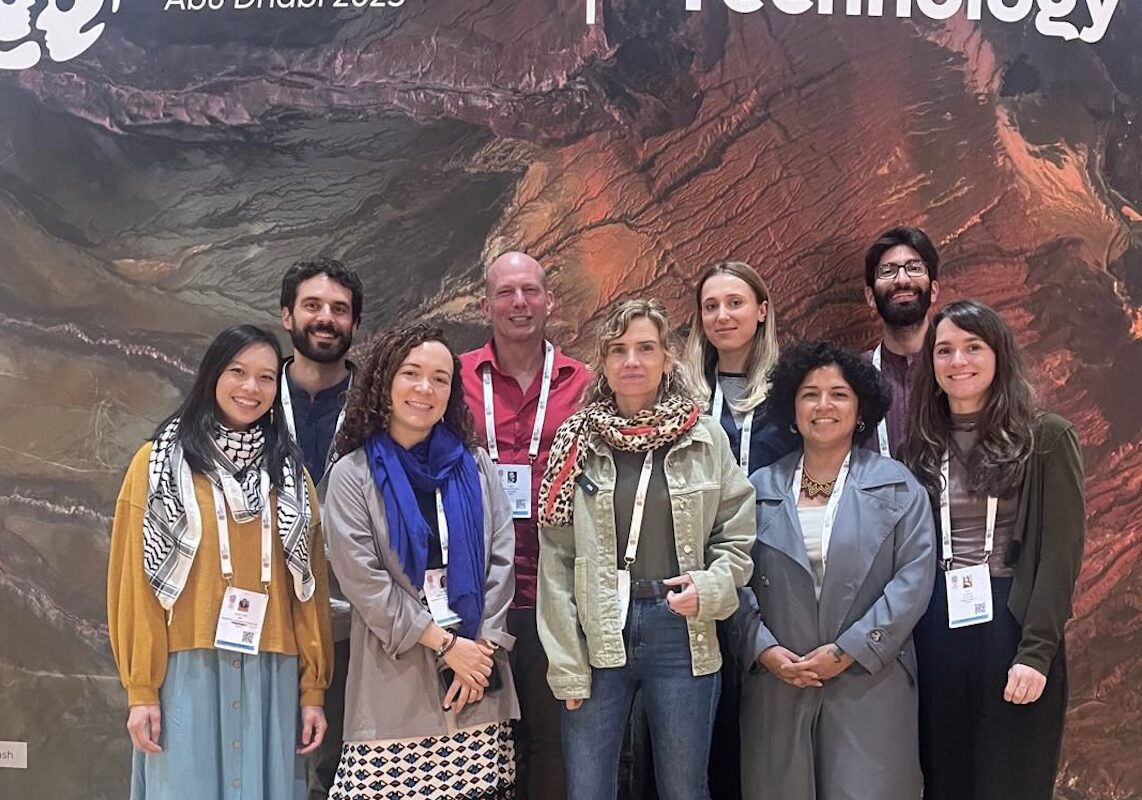The World Conservation Congress at Abu Dhabi was an organised maelstrom of activities which CONDJUST attributed to by attending en masse. The IUCN were even kind enough to feature all of us on its main press release closing the Congress. Shown here are Munib, Cat, Marina, Javier, Valeria, Karla, Danielle and the top of my head.
There were a number of highlights. First, there was the delights of the Reimagining Conservation Pavilion of whose programme CONDJUST was part. The brainchild of Ame Ramos of CEESP, and under Liza Zogib’s adept management, this pavilion brought together Synchronicity Earth, Arcus Foundation, Maliasili, the IIED, the Cambridge Conservation Initiative and the Forest Peoples Programme. Or in other words, we got to work with some of the most exciting practical thinkers and radical partners working in the avant-guarde of conservation. The Pavilion programme alone could have occupied us for the entire conference.
Beyond the Pavilion there were a host of new initiatives also being promoted and developed at the conference, and one that kept on coming up was the search to find new and better ways of measuring corporate contributions to nature. This is driven by, on the one hand, businesses’ need to track the harms they avoid and avert along their value chain, and the other their desire to document the good they do. But how can that be counted? Organisations like the Task Force on Nature-related Disclosures, the Nature Positive Initiative and Carbone 4 were all present and sharing the work they were undertaking.
One of the most interesting aspects of this was the open uncertainty and hesitancy as to how that could be achieved. There is, potentially, a great deal of money involved in these initiatives. But that was not, in the spaces I was present, producing a rush towards hasty answers as soon as possible. Rather the discussions were characterised by their openness and caution. There was a recognition that these sorts of contribution are different from carbon credits because they are much less likely to be fungible, that is, turned into exchangeable commodities. The quest for reliable documentation of change and ‘contribution to nature’ was not necessarily yielding the problematic simplifications that commodification can yield.
Second, was the openness to potential criticisms of the indicators which are being developed. For example, at this event, the Task Force for Nature-related Disclosures (TFND) produced a list of 16 indicators that it had suggested, and had been suggested by the Nature Positive Initiative and Science Based Targets Network. I was struck by the fact that the list centred on species risks, ecosystem health and measures of landscape change and that all were biophysical. But when I asked about the absence of indicators that tracked the rights of Indigenous Peoples and Local Communities in the landscape there was no defensiveness at all. Rather the tone was to welcome the observation, and to seek ways of responding to it effectively. I suspect this is partly because the work is still at a nascent stage.
There have been some sharp criticisms of the TFND, which are useful to recall. I am intrigued too by the possibility that the omissions and gaps in any indicator chosen, or each collection of indicators, are inevitable. They are a property of lists, and as such, from the perspectives of businesses, they are not a flaw of the approach. Rather they are an inevitable risk inherent in it. From a business perspective, risks need to be recognised and mitigated. The data justice challenge is to explore their potential impacts for society and nature.
But there is a further challenge to any attempt to bring in these social, economic and rights-based considerations to the indicators being developed for nature-related disclosures. And this is that, for many Indigenous Peoples and local communities, providing data for indicators could risk surrendering sovereignty and control over data that they do not wish to share. There are rights and needs not to be known, to keep a society’s knowledge for that society and not to share it. As June Rubis was explaining, (and has written about on several occasions, see here) rights and needs of concealment are really important here. This was captured well at another meeting she presented at during the WCC. Attempts to be transparent about nature-related disclosure will have to grapple with community desires not to sell their knowledge or let their livelihoods and lifeways become a tool for corporate profit.
How these contradictions and tensions might be resolved, if they can be, is uncertain. But they serve firmly to underline how important data justice considerations are in conservation decision-making. This was central, of course, to the Power in Data session that CONDJUST led at the Reimagining Conservation Pavillion. It was plain when talking to many people at the Congress that the idea of data justice was new. But its twin pillars of understanding the composition and bias built into datasets and models, and of questioning what gets counted as data, and what should be known in terms of data, were continually resurfacing throughout the World Conservation Congress.
Conferences like these are the place to begin these conversations. Our challenge is to continue them.
Dan Brockington,
Blanes,
Oct 2025

